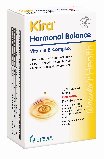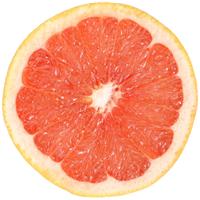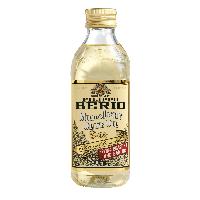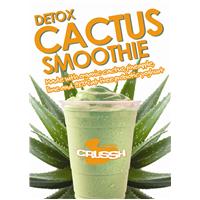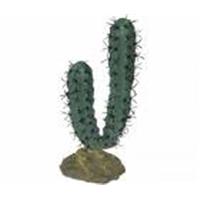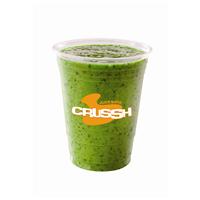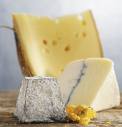
Antioxidnts are the elixir vitamins and supplements that help the body defend itself against free radical attack – these are unstable molecular structures that damage cells and which scientists believe are responsible for mutations that cause cancer and other diseases and illnesses. Although we identify several vitamins, minerals and supplements that have particular antioxident properties, they deliver the optimum benefits when taken with other essential nutrients and a balanced diet.
The most important antioxidants are alpha lipoic acid, acetyl L-carnitine, DMAE, vitamin A and betacarotene, vitamin C, Vitamin E, selenium, followed by vitamin B2 (riboflavin), and the minerals, copper, manganese and zinc. Other important antioxidents are co-enzyme Q10, carotenoids such as lutein and lycopene, alpha lipoic acid, green tea and grapeseed extracts.
Since many processed foods are deficient in essential vitamins they can be taken by way of supplements. New research has shown that Vitamin B3 in the diet can help prevent Alzheimer’s, and Vitamins D and C are being investigated for their potential role in the prevention of cancer.
Vitamins are either water or fat soluable. Vitamins A, D, E and K are fat soluable and stored in the liver by the body. Since they are used slowly overdosing on them can be more toxic. The B vitamins and vitamin C are water soluable and excess amounts are flushed out of the body.
The following is a list of the main antioxidants and anti-ageing supplements (vitamins, minerals, amino-acids and hormones) and where they can be found naturally in various foods.
ALPHA-LIPOIC ACID
A major cause of ageing is the decline in the energy-producing capability of cells which results in reduced metabolic activity and eventually cell death. This is a highly potent antioxidant that fights free radicals and since it is both water and fat soluable means that it can penetrate to all parts of a cell. This enzyme helps cell metabolism, general vitality and production of collagen. It is usually taken in combination with acetyl-L-carnitine, an amino acid that assists the transport of fat into the mitachondria of the cell. As an antioxidant it is also used in anti-ageing skin creams.
This supplement is not recommended during pregnancy or for diabetics who are glucose intolerant. It should not be taken after 5pm as it is a stimulant and could keep you from sleeping. It is also in the following foods – spinach, liver brewer’s yeast, beef and potatoes.
AMINO ACIDS
Amino acids are the building blocks of the body and made up of carbon, oxygen, hydrogen and nitrogen that make proteins to form muscles, hormones, enzymes, skin, hair, organs and bones.
Altogether there are 23 amino acids:
L-Arginine: Used to make muscle tissues and relaxes blood vessels. Researchers believe it helps reduce angina, high blood pressure and glaucoma. It also helps increase muscle size. It is found inoats, grains, fish, red meat, Brazil nuts, almonds, peanuts and gelatine.
Aspartic Acid:Assists red-blood cell production and is helpful for cancer patients who have undergone radiotherapy. Can be taken as part of the supplement magnesium aspartate. Found in fish, meat, sunflower seeds, almonds, gelatine and walnuts.
Carnitine:Assists in detoxing and fat burning, reducing cellulite. Also found in yeast, dairy products, liver and red meat.
Acetyl-L-carnitine: is one of the most extensively researched nutrients and credited with aiding brain function. It is believed to work by increasing the levels of important neurotransmitter chemicals essential for memory, focus and learning. It has also been shown to reverse damage to brain cells brought about by poor nutrition and even alcohol abuse. Tests on Alzheimer’s patients have shown it can improve memory function.
Acetyl-L-carnitine is a natural component of the brain’s chemistry but levels decline in age and also through external factors such as pollution. The only natural source is bovine so a synthetic form, derived from amino acids, is recommended.
A number of studies of acetyl-L-carnitine have shown that it slows or prevents age-related decline in mental function, depression, assists recovery in stroke victims and Alzheimer’s. It may also be of benefit in the management of Parkinson’s disease, damaged nerves and diabetes. Patients with brain injuries report that a combination of acetyl-L-carnitine with phosphatidyl serine, significantly improves their overall brain function, attention span and learning ability. Acetyl-L-carnitine has also been found helpful in the management of diabetes especially when combined with lipoic acid and GLA.
It also has a role as a powerful immune enhancer. This is due to its ability to promote the health of the nervous system, which in turn governs the activity of the immune system. Acetyl-L-carnitine may offer specific benefit to HIV patients and those with tuberculosis. Another attibute is that the benefits are almost immediate. Its effects are enhanced by taking it in combination with phosphatidly serine, B vitamins, phosphatidly choline and EPA/DHA (fish oils).
Read: The Carnitine Miracle by Robert Crayhon. Also the skin-anti-ageing books by leading dermatologist, Nicholas Perricone.
Side effects: There are no known side effects this is believed to be because acetyl-L-carnitine is a nutrient already manufactued by the body to protect and regenerate the brain. It should not be taken after 5pm as it is a stimulant.
Cysteine: Helps to break down toxins in the liver and also helpful to cancer patients. In laboratory tests it has been shown to extend the life of some animals. Found in eggs, wheatflour, Brazil nuts, sunflower seeds and oats.
Glutamic Acid: One of the components that goes to make folic acid but excess can provoke epilepsy and seizures so sufferers need to ensure they take adequate vitamin B6 which breaks it down. There is no supplement since it is abundant in food. Found in cheese, sunflower seeds, almonds and wheatflour.
L-Glutamine: Assists the repair of the stomach lining damaged by excessive alcohol and also helps counter cravings for alcohol. Found in cabbage, barley and potatoes.
Glutathione: People suffering with rheumatoid arthritis, multiple sclerosis, cancer and Parkinson’s Disease often have low levels of this amino acid. Treatment of those suffering from Parkinson’s over a 30-day period discovered a 42 per cent decline in symtoms. Although it is available ina supplement it has shown that diet combined with taking the anti-oxident lipoic acid is far more effective. Found in fish, meat, fresh fruit and vegetables.
Glycine: Breaks down the uric acid in the kidneys and is therefore useful for gout suffers. Also found to reduce the symptoms of schizophrenia and osteoarthritis. Found in sunflower seeds, almonds, walnuts, buckwheat and gelatine.
Histadine: Helps reduce joint inflammation in rheumatoid arthritis sufferers who usually have low levels. But allergy suffers should beware as its main function is making histamines. Found in sunflower seeds, peanuts, dairy products and gelatine.
Isoleucine: Reduces levels of tryptophan, which encourages sleep, and is therefore helpful to sufferers of chronic fatigue syndrome (ME). Found in sunflower seeds, oats, cheese and gelatine.
Leucine: Also assists in combating tiredness. Found in the same foods as Isoleucine.
Lysine: May help in reducing the symtoms of the herpes virus. Usually taken with vitamin C and zinc. Found in beans, lentils, broccoli, potatoes and tofu.
Methionine:Helps reduce histamines and is therefore helpful in treating allergies and hay fever. Needs to be taken with the B vitamins, folic acid and B12. Found in oats, seeds and Brazil nuts.
Ornithine: Assists in increasing muscle mass and weight gain. Taken in conjunction with arginine. Found in eggs and dairy foods.
Phenylalanine: Produces natural painkillers so is helpful for backache and arthritis and also depression. Found in cheese, oats, peanuts, almonds.
Proline: Taken with vitamins B3 and C it can slow down an eye condition called gyrate atrophy. Found in sunflower seeds, oats, wheat, cheese and gelatine.
Serine:Works on the memory neurotransmitters acetylcholine and dopamine to aid memory. Found in almonds, walnuts, gelatine and eggs.
Taurine: Reduces cholesterol and helps to prevent gallstones. Found in cow’s milk, liver, kidney and fish.
Threonine: Reduces symptoms of depression. Supplements should only be taken with medical advice. Found in fish, cheese, gelatine, almonds and peanuts.
Tryptophan: Helps the brain produce serotonin which can assist in depression, insomnia and weight loss. A 500mg dose is taken daily. Found in sunflower seeds, oats, Brazil nuts and cheese.
Tyrosine: Has been used alongside conventional drugs to treat Parkinson’s Disease as it helps to make the neuro transmitter dopamine. Also helpful to reduce stress. Found in eggs, sunflower seeds, almonds, peanuts and cheese.
Valine: Helps alleviate the symptoms of ME when taken in conjunction with isoleucine and leucine. Found in sunflower seeds,gelatine, cheese, peanuts, oats and fish.
BETA-CAROTENE
Found in carrots and other highly coloured vegetables and fruits. An antioxidant that may help fight cancer.
BIOFLAVONOIDS
A chemical found in fruits and vegetables. Found in the following foods: Apricots, plums, blackberries, strawberries, green tea, rosehips, green peppers, green beans, broccoli, red cabbage, grapes, cherries, rhubarb, red wine, lemons,oranges. Quercetin, the most active of the citrus bioflavonoids has anti-inflammatory properties and helps allergic reactions. Also beneficial in diabetes as it helps prevent damage to blood vessels by excess sugar in the body.
Grapes, particularly grapeseeds and red wine are a good source of the bioflavonoids proanthocyanidins (see below). These prevent hardening
of the artery. Butcher’s Broom can reduce inflammation and swelling associated with leg problems as it strengthens the vein and helps blood flow and even mor effective when combined with horse chustnut seed (conker) extract, vitamin C and the flavonoid rutin. The plant, milk thistle contains the bioflavonoid silymarin which promotes cell regeneration and can help repair liver damage from alcohol. This helps the skin and promotes energy.
CoEnzyme Q10
CoEnzyme Q10 is a fat-soluble vitamin-like substance present in every cell of the body. It also occurs naturally in a number of foods, including organ meats, soy oil, sardines, mackerel and peanuts. It is a powerful antioxidant and acts as a coenzyme for several of the key steps in the production of energy within every cell. Low levels of CoQ10 have been linked to several deseases. Low levels are attributed to an insufficient dietary intake combined with an inability of the body to manufacture its own. A number of commonly prescribed medications can also affect levels including statins (used to treat high cholesterol), beta-blockers and tricyclic antidepressants.
CoQ10 has been particularly successful in the area of cardiac health. It is found in fairly high concentrations in healthy hearts. Conversely, low levels are associated with congestive heart failure. It is also thought that low levels may also be the main cause in heart failure. It has also helpful in reducing blood pressure and heart rate and associated conditions, as well as peridontal disease. There is also increasing evidence that the brain can also suffer.
Ageing humans have been found to have 57% less CoQ10 on average compared to that of young adults. Its effect on the mitochondria, the “energy powehouses” of our cells where it regulates the oxidation of fats and sugars into energy, makes it one of the most important nutrients for people over the age of 30. Although there are no known side-effects its energy boosting properties mean that it can increase the body’s production of free radicals and it is advised that it is taken with other potent antioxidents ( for example Life Extension Mix and/or Life Extension Booster or Gamma E Tocopherol with Sesame Lignans formula).
DHEA (dehydroepiandrosterone)
The supplement DHEA, is a steriod hormone that can slow ageing, prevent disease and improve strength. Its medical uses include the treatment of depression and dementia It is used by some athletes to increase muscle mass and strength, but banned by sporting bodies including the International Olympic Committee and the National Football League. It is classed as a food supplement and has also become popular as an anti-ageing remedy.
Ageing men and woman are invariably DHEA deficient. DHEA is the most abundent circulating hormone in the youthful human body but peaks by the age of 25 and declines thereafter. By the age of 70 most people DHEA has declined by over 80%. DHEA should not be taken by those with existing prostate or breast cancer. Those with liver disease should take dissolve in the mouth tables rather than capsules.
DHEA levels decrease after 30 and it is thought that some symptoms of ageing could be associated with a DHEA deficiency.There has been considerable interest in using DHEA in Alzheimer’s disease. DHEA supplements in menapausal woman have also shown to increase estrogen levels and reduction in hot flushes.
A study by the Univesity of California, San Diego, said that 50mgs a day taken daily over six months increased lean body mass and muscle strength.
Known side effects: DHEA and pregnenolone may cause heart rhythm irregularities and irreversible hair loss.
DMAE
DMAE, or dimethylaminoethanol (chemical name deanol), is a compound found in high levels in oily fish such aas anchovies, sardines and salmon. It is also produced in small amounts by the human brain. It is sold as a food supplement to boost brain function and is thought to be helpful in attention deficit hyperactivity disorder (ADHD). Doctors are also looking at its role in treating poor memory and Alzheimers Disease, as well as some movement disorders.
The supplement was originally researched as a treatment for ADHD and early studies in the 1970s revealed that it was helpful for children with learning disabilities and behavior problems. This substance appears to increase production of chemicals in the brain essential for short-term memory, concentration, and learning capacity. It is also classed as an “cholinergic” because it is thought to increase levels of the neurotransmitter acetylcholine, one of the chemicals in the brain that enhances mental powers. A decrease in the brain cells that produce acetylcholine is thought to be parlty responsible for Alezheimers. “Cholinergic” drugs, such as tacrine (Cognex), donepezil (Aricept), rivasatigmine (Exelon), and galantamine (Reminyl) are used to treat the dementia of Alzheimer’s disease.
Although there are no conclusive studies it is possible that DMAE has memory-boosting effects. Many nutritionally oriented physicians prescribe DMAE along with another memory enhancer, the dietary supplement phosphatidylcholine.
DMAE supplements won’t work for everybody and are not intended as a cure. But they are safe and may be helpful. They should be taken with meals.
There are no known drug or nutrient interactions associated with DMAE but more needs to be learned this supplement. You should consult a doctor, particularly if you have any illnesses such as epilepsy.
International anti-ageing skin doctor Nicholas Perricone describes DMAE as “the magic bullet” for skin. He prescribes supplements and a diet high in wild salmon – his research documents changes in the skin in only three days. He believes that DMAE is a building-block of the neuro-transmitter acetylcholine which declines with age and causes a deterioration in musle-tone as well as brain function. This diet also has a beneficial effect on weight.
Recommended books by Perricone: The Perricone Prescription and The Wrinkle Cure.
EVENING PRIMOSE AND FISH OILS
Alpha-linoleic acid (ALA), an amega-3 oil, and gamma-linoleic acid (GLA), an amega-6 oil are naturally occuring fats with ani-inflammatory effects.
Fish oils: it is important to pick an oil that has been purified and contains a high dose of Eicosapentaenoic acid(EPA). Oils made from fish rather than livers are preferable because of the levels of toxins.
Glucosamine
Glucosamine is a natural substance in the body known as an amino-sugar which is made in the body as a result of the synthesis of L-glutamine and glucose. Glucosamine stimulates glycosamino-glycans which are important in the formation of cartiliage and joint ligaments. As people age, they lose the ability to manufacture sufficient levels of glucosamine. Cartilage then loses its gel-like nature and ability to act as a shock absorber. Research in The Lancet medical journal which used X-rays to investigate the knee cartilage of volunteers, found those who took glucosamine pills for three years halted the progress of their osteoarthritis. In Spain, Portugal and Italy, glucosamine is the preferred treatment for arthritis. Glucasamine is sold as a supplement and there are also skin patches. It is often sold in supplements with Chondroitin sulfates which help the glucosamine into joints.
HUMAN GROWTH HORMONE
HGH is released by the pituitary gland during sleep and is the most important anti-ageing hormone of all. It is produced until around mid-20s to age 30, but continues to decrease as we age. Genuine HGH is synethically made by only two drugs companies mainly for use with children who suffer from growth hormone deficiency. In adults HGH injections are used to increase metabolism and other visible signs of ageing but these are only available on prescrption. Naturapathic HGH has been criticised as a “scam” by professional anti-ageing experts.
HGH restores muscle strength, stamina and other attributes of youth.
There are also natural ways to encourage HRH production, including exercise. The following are HGH boosters:magnesium, calcium, potassium, zinc and B vitamins found in whole grains, fresh fruits and vegetables, plus unprocessed nuts and seeds, brown rice, low sugar cereals especially oats, soya-based foods and raisins. A good night’s sleep and regular exercise help increase production of this hormone. People who sleep on average eight hours a night live longer than those who sleep for six hours or less. Also HGH boosters are the amino acids omithine, lysine, arginine and glutamine.
Read Staying Young; Growth Hormone by Dr Gilbert Elian (Age Reversal Press).
Known side effects: HGH injections can only be obtained with a doctor’s prescription. It should not be used by those suffering from cancer. There are studies that suggest it may increase risk of cancer, triggers diabetes and joint pain -although supporters dispute this.
MELATONIN
Millions of people already take melatonin, which is sold in pharmacies and health food stores in the United States, Thailand, Singapore and on the Internet. Melatonin is a hormone that is produced naturally in the pineal gland in the brain and is released during the night. It regulates sleep patterns and influences other hormones and is useful in relieving jet lag and has anti-cancer properties. In experiments it has been shown to increase the lifespan of animals.
PREGNENOLONE
A hormone produced by the adrenal glands and ovaries that regulates the growth and condition of skin. It is often taken in combination with DHEA. Known side effects: DHEA and pregnenolone may cause heart rhythm irregularities and irreversible hair loss. On top of that, these treatments can cost up to $1,000 a month. They should not be taken by anyone with cancer.
PROANTHOCYANIDINS (a class of plant flavonoids)
Found in grapes, grape seeds and red wine and help to prevent hardening of the arteries.
ANTIOXIDANTS IN FOODS
As well as supplements they can be found in the following foods:
*Alpa lipoic acid: spinach, liver, brewer’s yeast, beef, potatoes.
*Anthocyanins: blueberries, bilberries
*Carotenoids: sweet potatoes, carrots, spinach, corn, sweet peppers, spirulina, kale
*Catechins: green tea, green tea extract, grapes and chocolate
* Coenzyme Q10: meats, peanuts, sardines, spinach
* Flavonoids: broccoli, ginkgo biloba, tomatoes, soybeans, onions, apples and red wine
* Lutein (a carotenoid): kale, spinach, broccoli, grapes, zucchini, leeks, corn
* Polyphenols: green tea, cherries, grapes, most berries
* Selenium: Brazil nuts, brown rice, sea food, eggs, tuna, buckwheat
* Tocotrienols: part of the vitamin E complex found in eggs, meat, palm fruit oil
* Vitamin A found in liver, whole milk, eggs, cheddar cheese, beta carotene;
* Vitamin C – citrus fruits, papaya, brussel sprouts, broccoli, strawberries
* Vitamin E – nuts, soybeans, spinach, sunflower seeds, asparagus, sweet potatoes
* Sulpher in nutrients such as cysteine, glutahione and lipoic acid.
* Bromelain, natural enzyme found in the pineapple, and available as a supplement, has anti-inflammatoryproperties.


